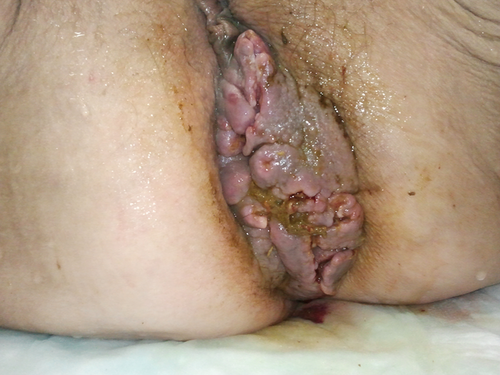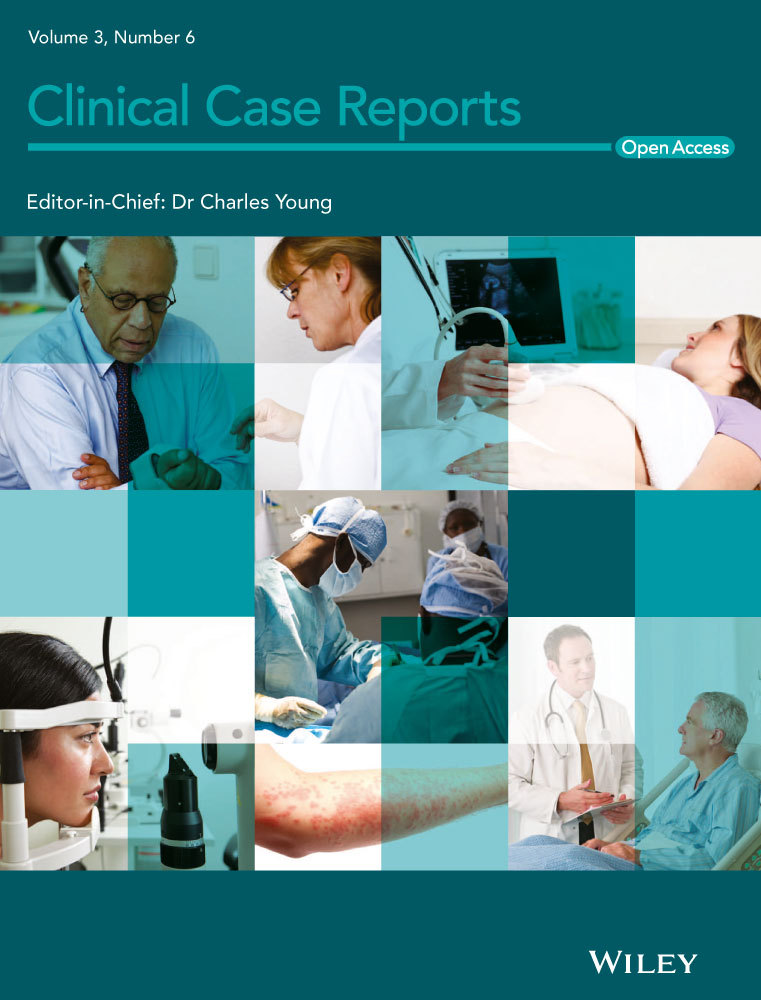Big anal skin tags? What is this?
Key Clinical Message
A hard and bleeding anal and perianal mass stenotized the anus and required left-sided colostomy. Incisional biopsy showed a moderately differentiated spiniocellular carcinoma. Chemoradiotherapy treatment alone reduced significantly the mass.
Answers
- Giant condyloma.
- Perianal skin tags.
- Anorectal melanoma.
- Spinocellular Carcinoma.
A hard and bleeding mass extended from the anus to the vaginal orifice (Fig. 1).

The mass infiltrated into the ischio-rectal fossae and stenotized the anus so much that it was explorable by using the little finger.
Incisional biopsy results indicated an infiltrating and moderately differentiated spinocellular carcinoma.
An impending bowel obstruction required left-sided colostomy.
The patient receives nine cycles of chemotherapy according to the Al Sarraf protocol.
Radiotherapy (RT) for a total of 56.5 Gy associated to 5FU sensitizing infusion further reduced the disease.
Successive CT and MR imaging confirmed absence versus minimal residual disease.
Conflict of Interest
None declared.




